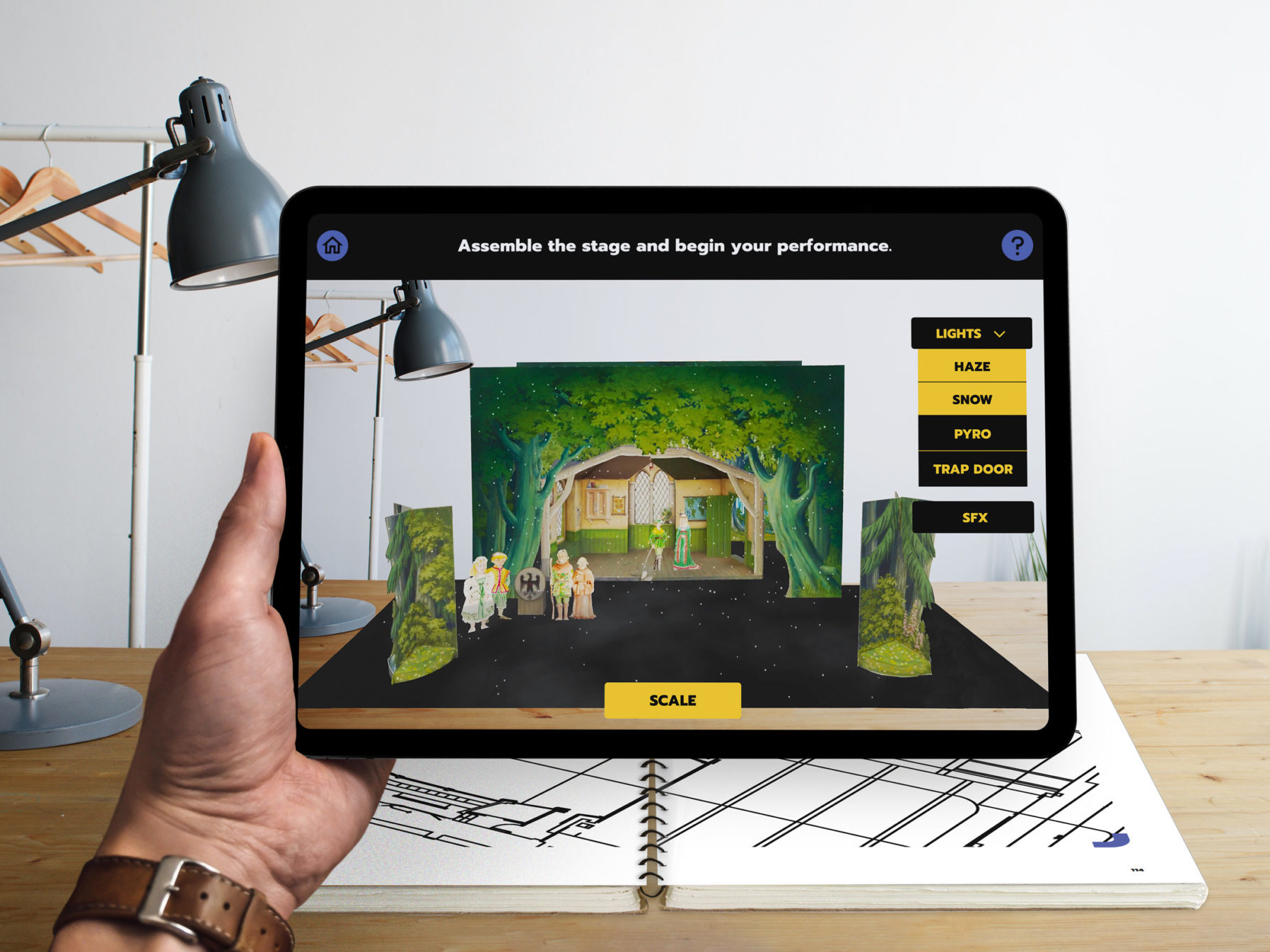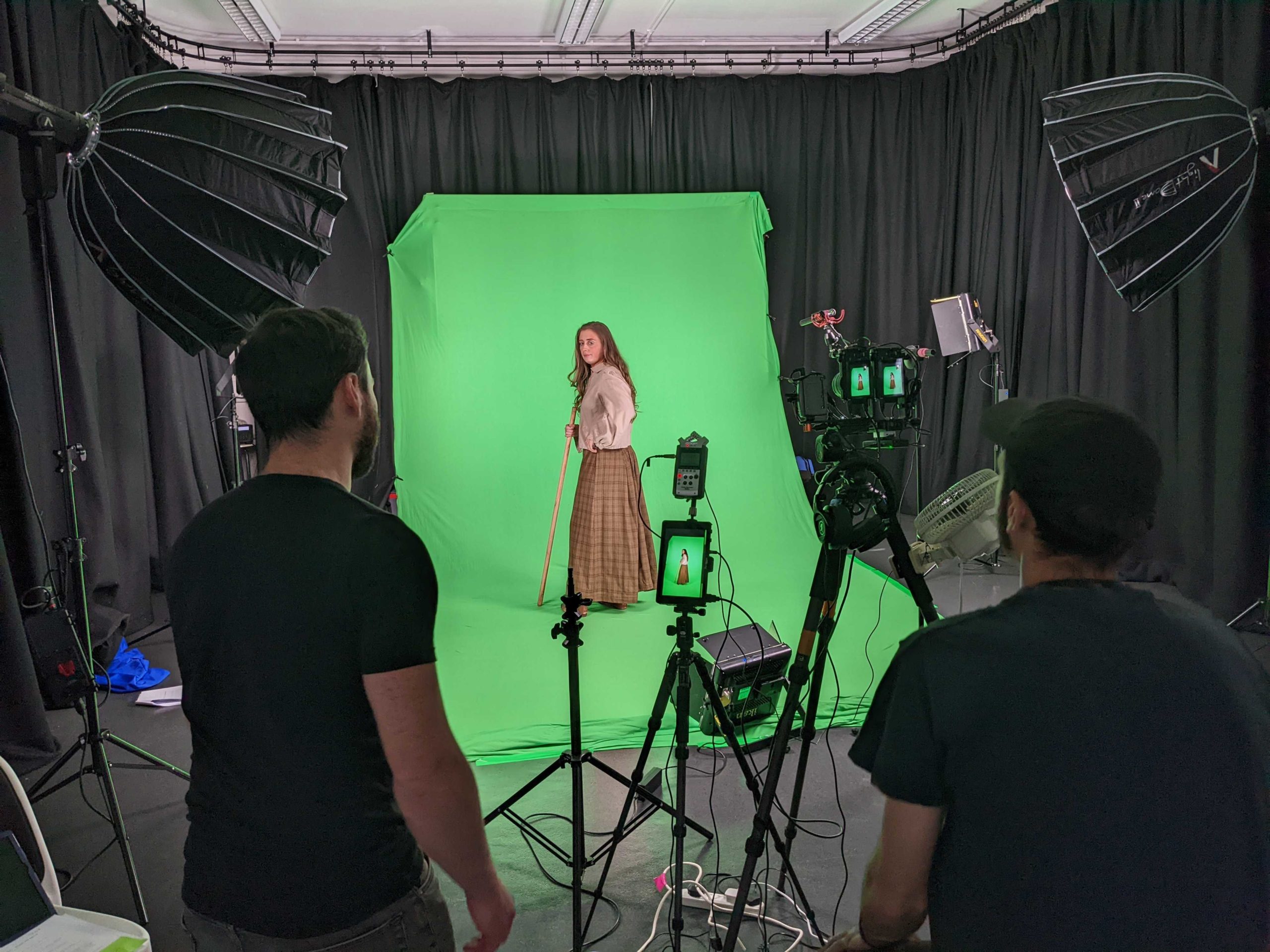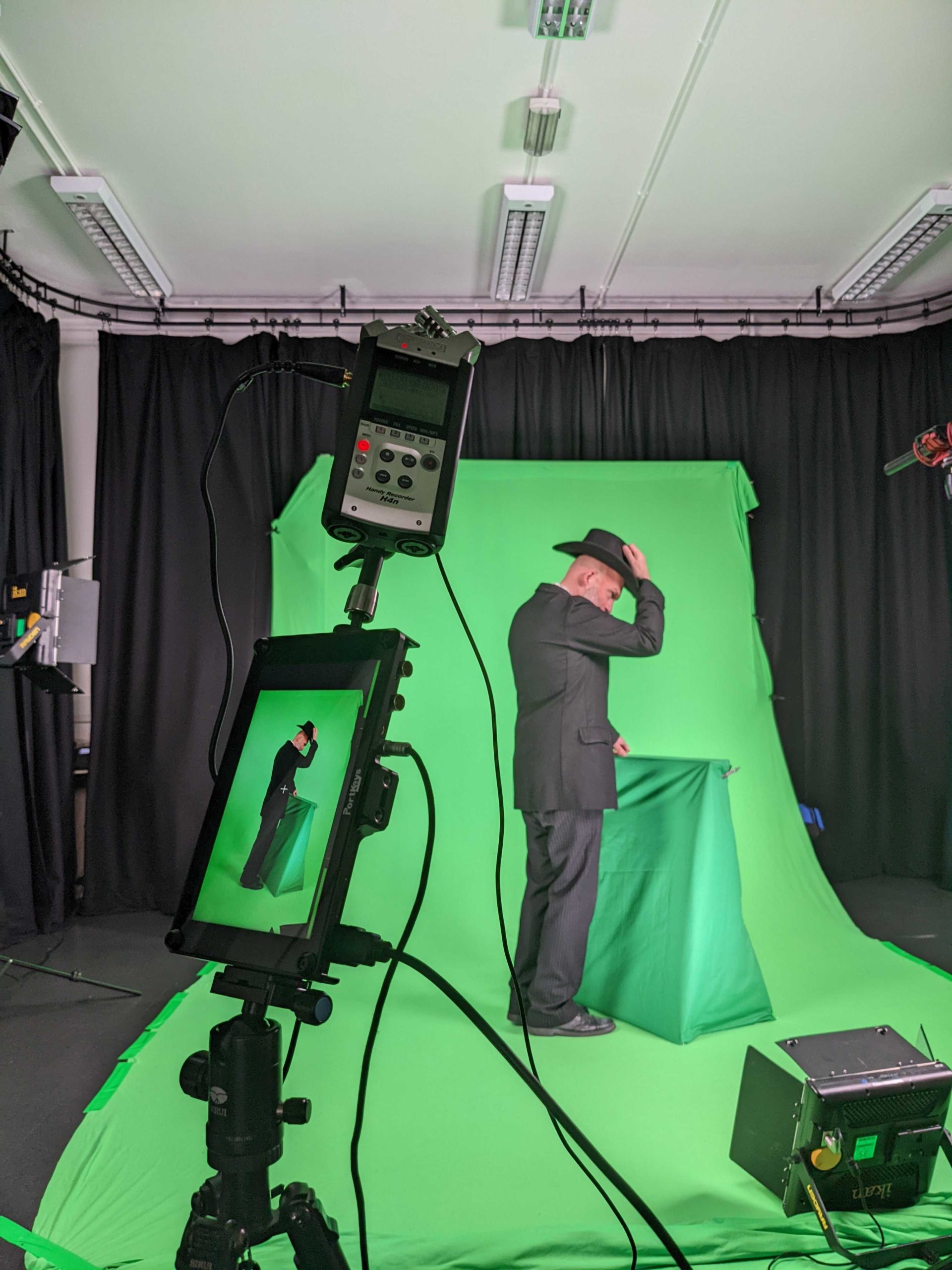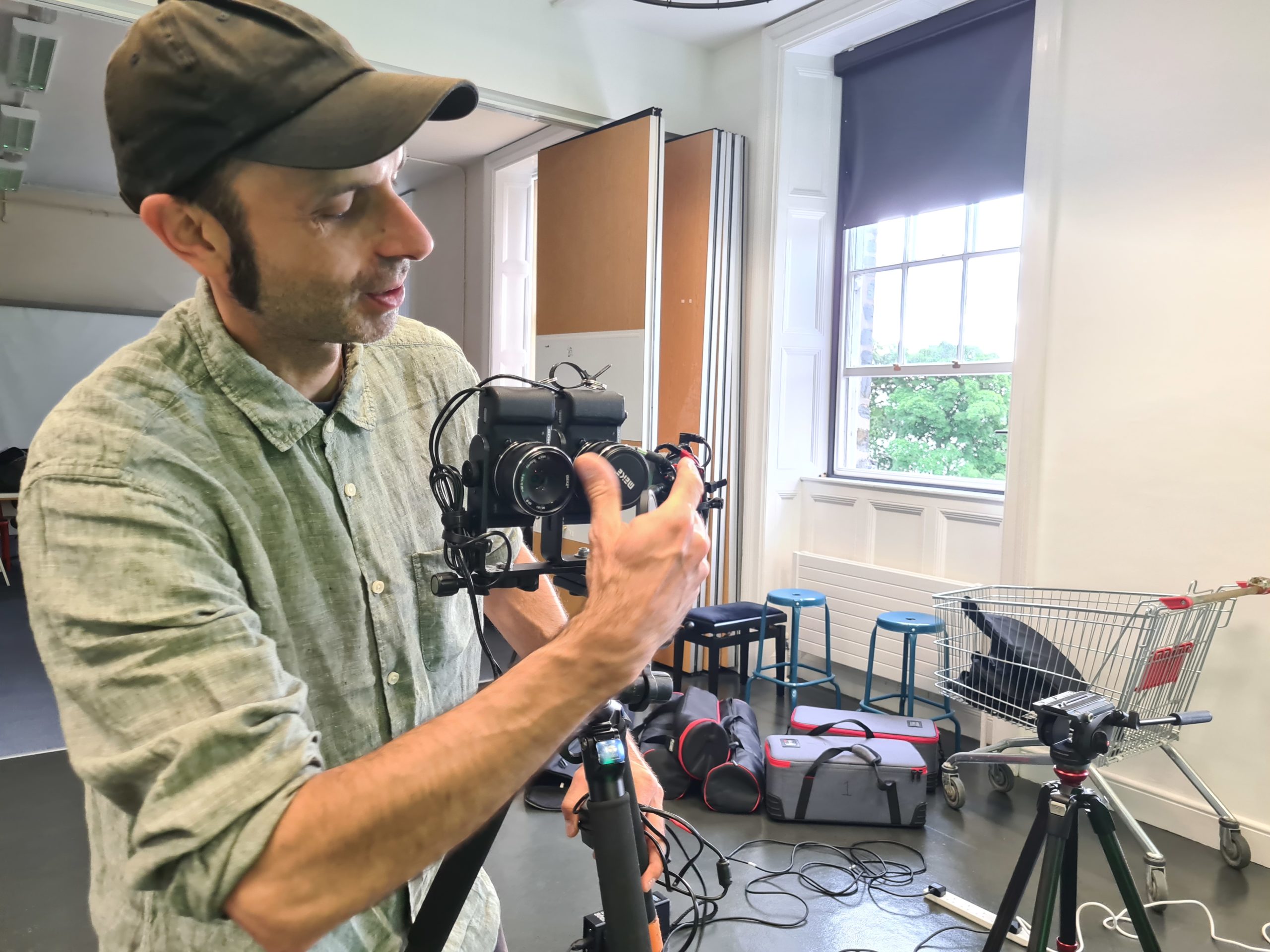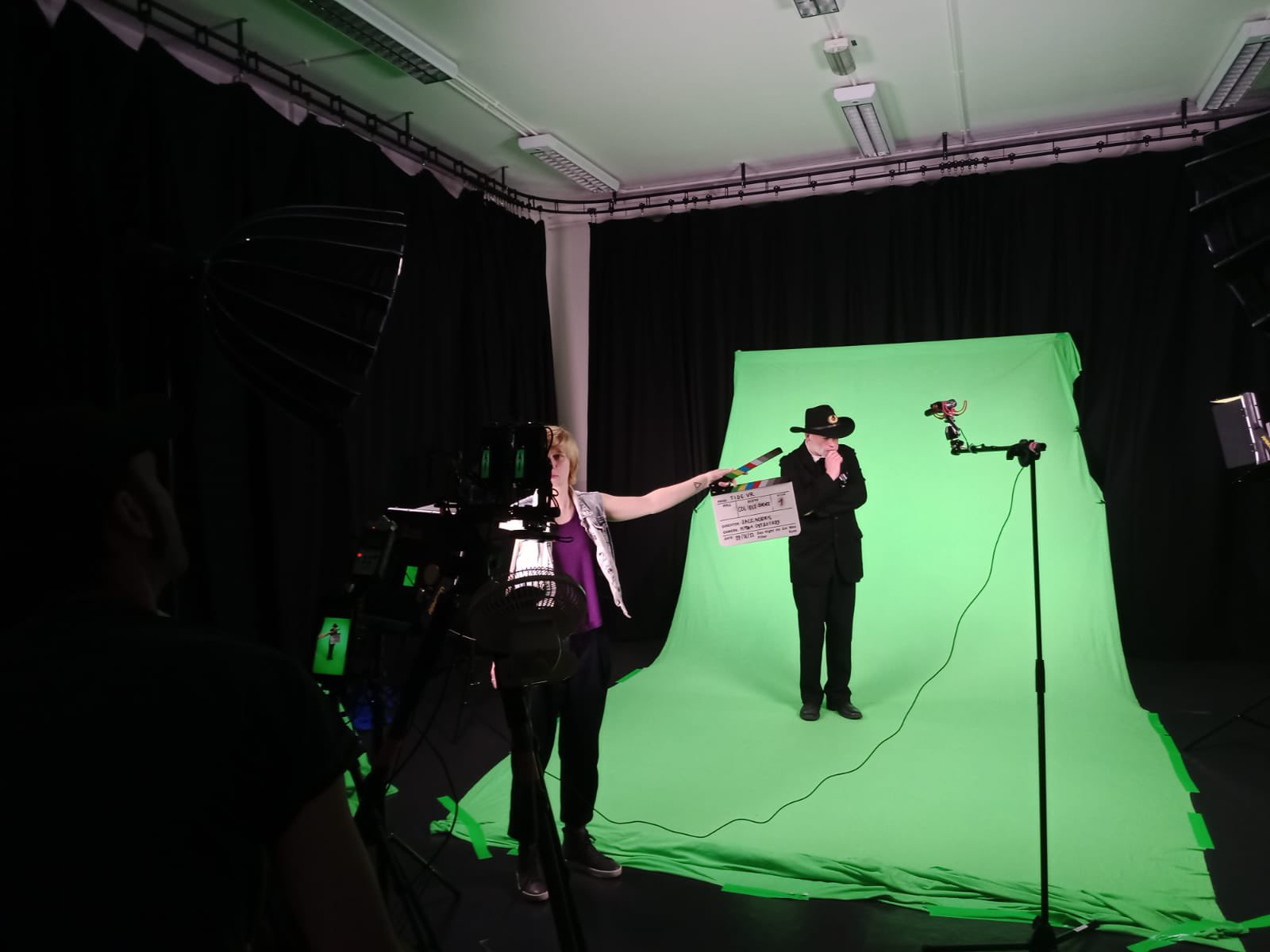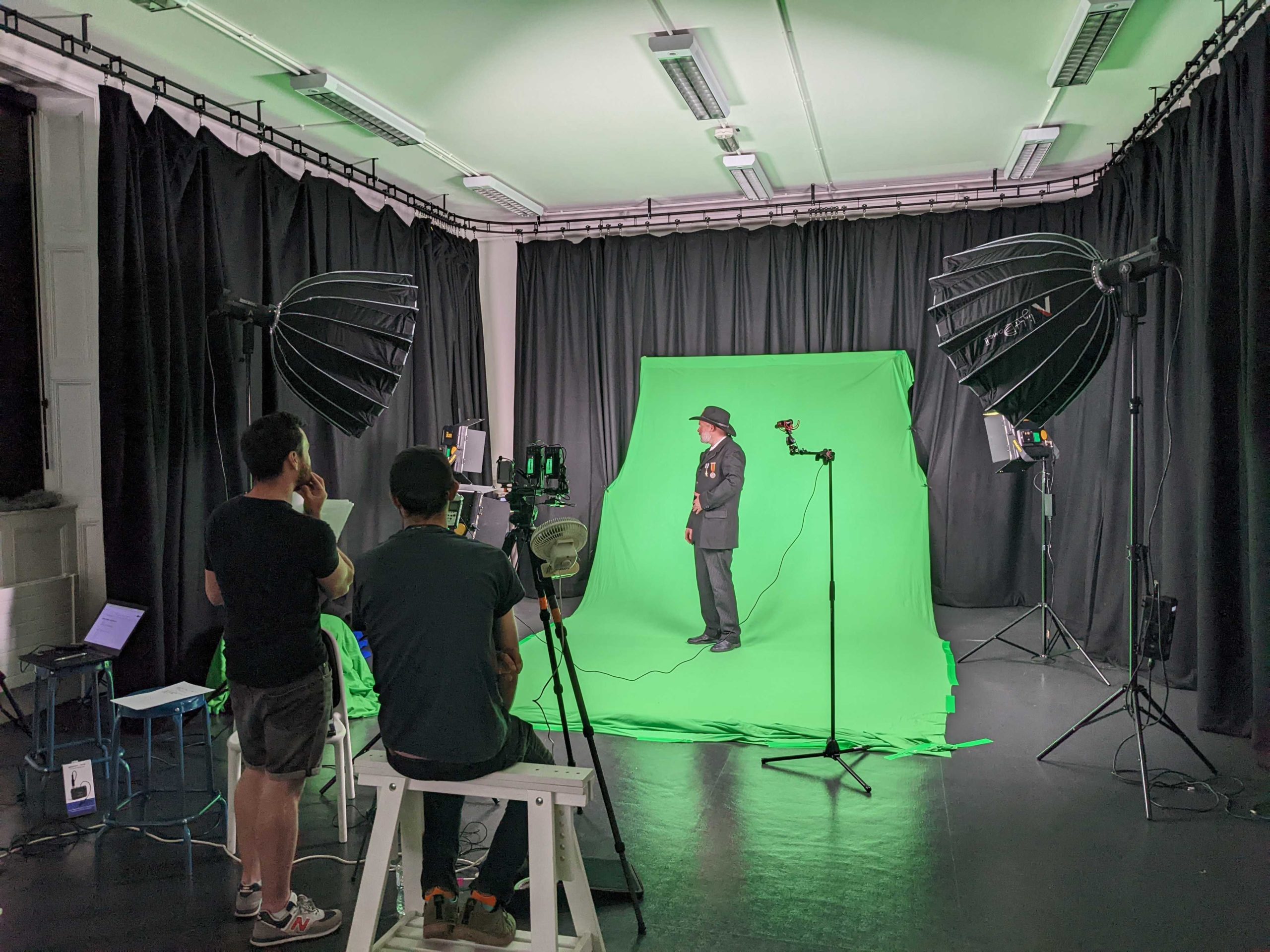Welcome to the secondCurio Quarterly!
The last three months have been a blur of busyness and binoculars. From 19th century VR to Revolutionary War AR experiences, there’s been no shortage of exciting digital heritage projects.
Read on to find out what the Zubr Curio team have been up to since the start of April…


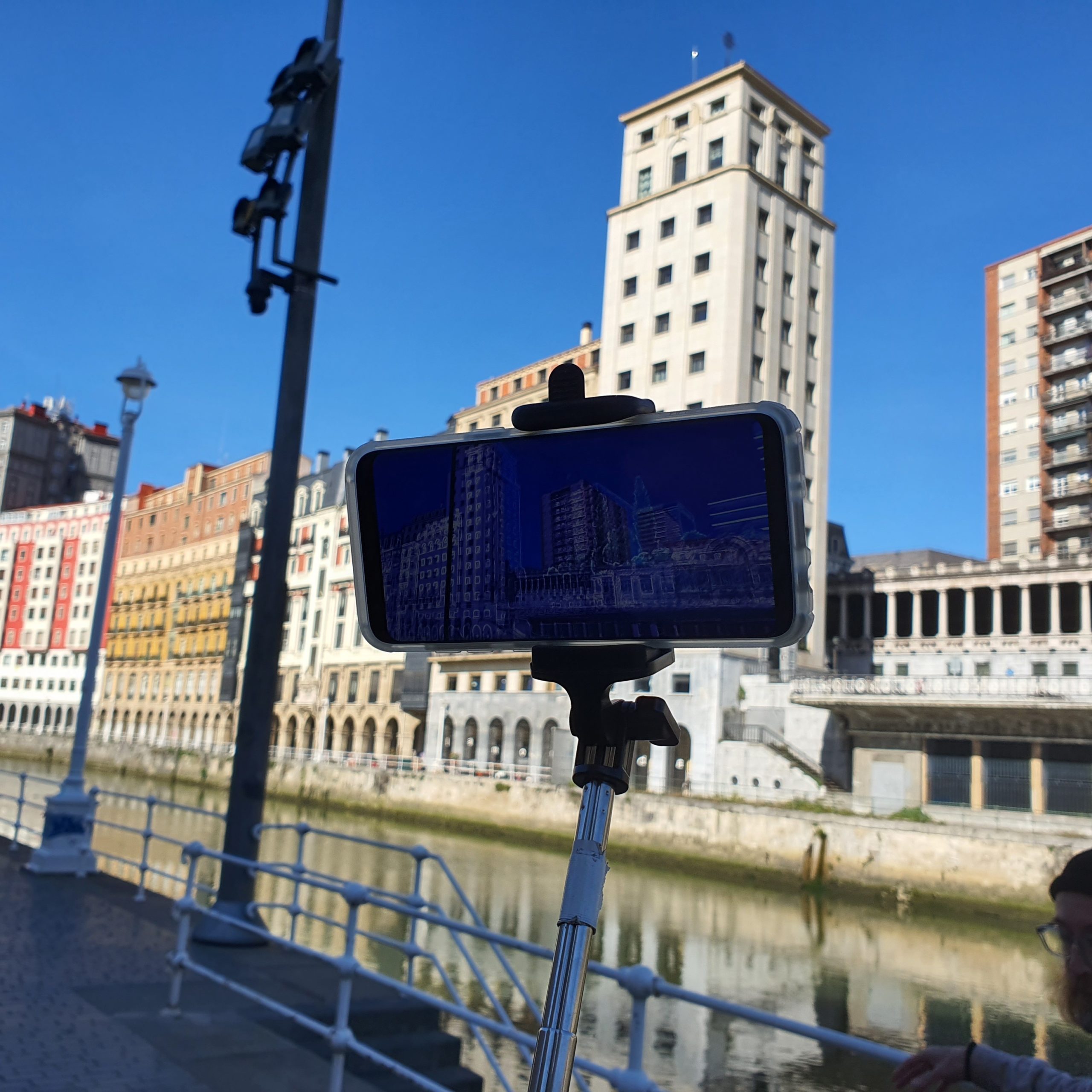
What have we been up to?
In April and May we supported Duncan Speakman and Uninvited Guests’ international tour of their AR experience ‘Billenium.’ Billennium is an Augmented Reality tour of the future of a place. It is a theatrical guided tour, not of historic sites, but of a city’s futures, on which you walk through time to the locations of utopian and dystopian science fictions. Future architecture appears before your eyes, and you hear what different worlds might sound like.
With shows adapted for for BBK OFF Festival in Bilbao, International Theater Days in Belgrade, and PLACCC Festival, Budapest, we added new 2D and 3D assets for each location. As well as general debugging and technical support, we experimented with new drawing tools and object spawning techniques to allow the artists and tour guides who deliver the live show maximum freedom of expression.
At the start of April we were delighted to win one of 11 Archive Testbed funding grants from the National Archives. We’re working with Bristol Archives to build an augmented reality experience which reveals the original sites of 1920s cinemas around Bristol. Users will be able to stand in front of the very space where these 6 cinemas once stood, and see the original floor plans transform into the building facades. This is an innovative, interactive use of digitised architectural plans, providing greater public access to archives.
We also began work on a virtual reality installation and an immersive dome project, thanks to funding from Arts Council England. Bequeathed by Bill Mitchell (1951 – 2017) as a gift for the artist in everyone, to inspire a fresh generation of creators, makers, thinkers and radicals Bill’s Attic is a physical and digital resource of incredible artefacts. This summer, visitors to the Plymouth Market Hall can visit a 3D model of Bill’s Attic using a VR headset or enjoy a cinematic, point cloud tour of the attic in the dome itself.
For the past few months we’ve been working on a virtual reality museum installation that will launch at the Foyle Maritime Festival this July, before being installed at the Tower Museum. The VR experience, ‘Afloat and Ashore’, is part of the TIDE Atlantic project to develop new historical maritime tourist packages using digital technologies to link cultural attractions on Europe’s Atlantic. We’re developing an immersive experience which puts users in the place of an Irish immigrant on their journey to New York, supported by Derry and Strabane District Council. In late April we jetted off to Belfast to demo the experience to our project partners from the Tower Museum and Urban Scale Interventions.
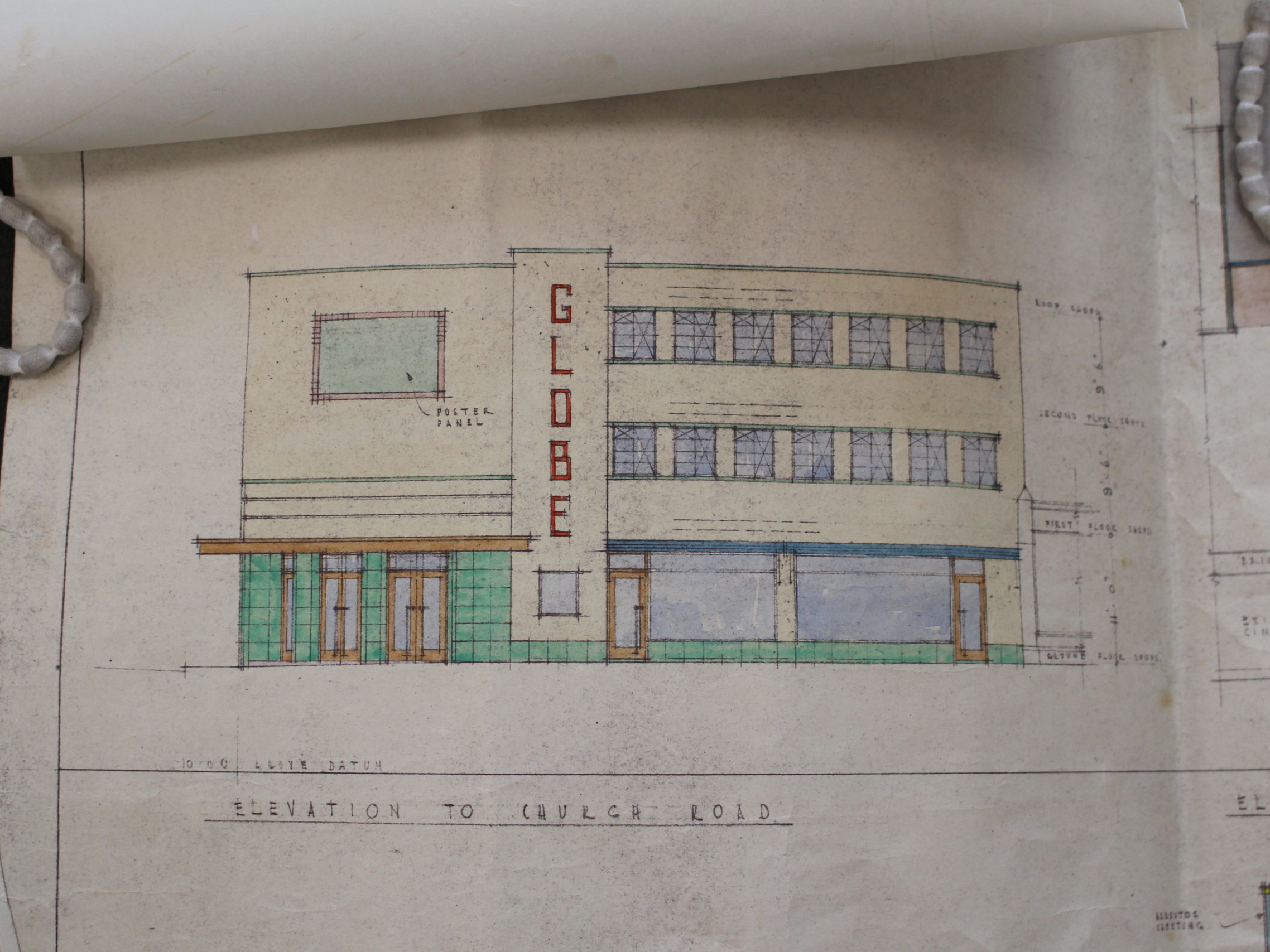
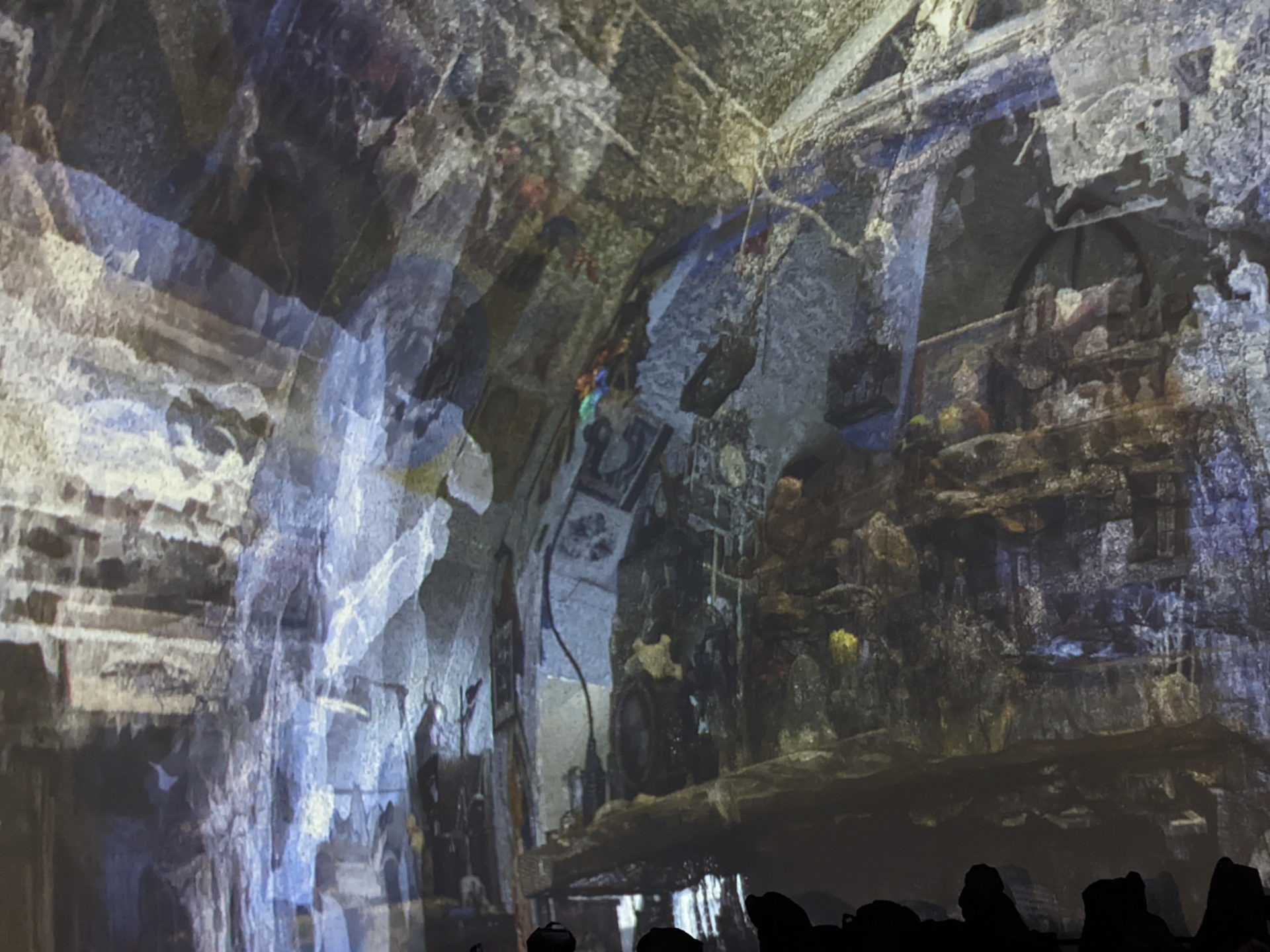




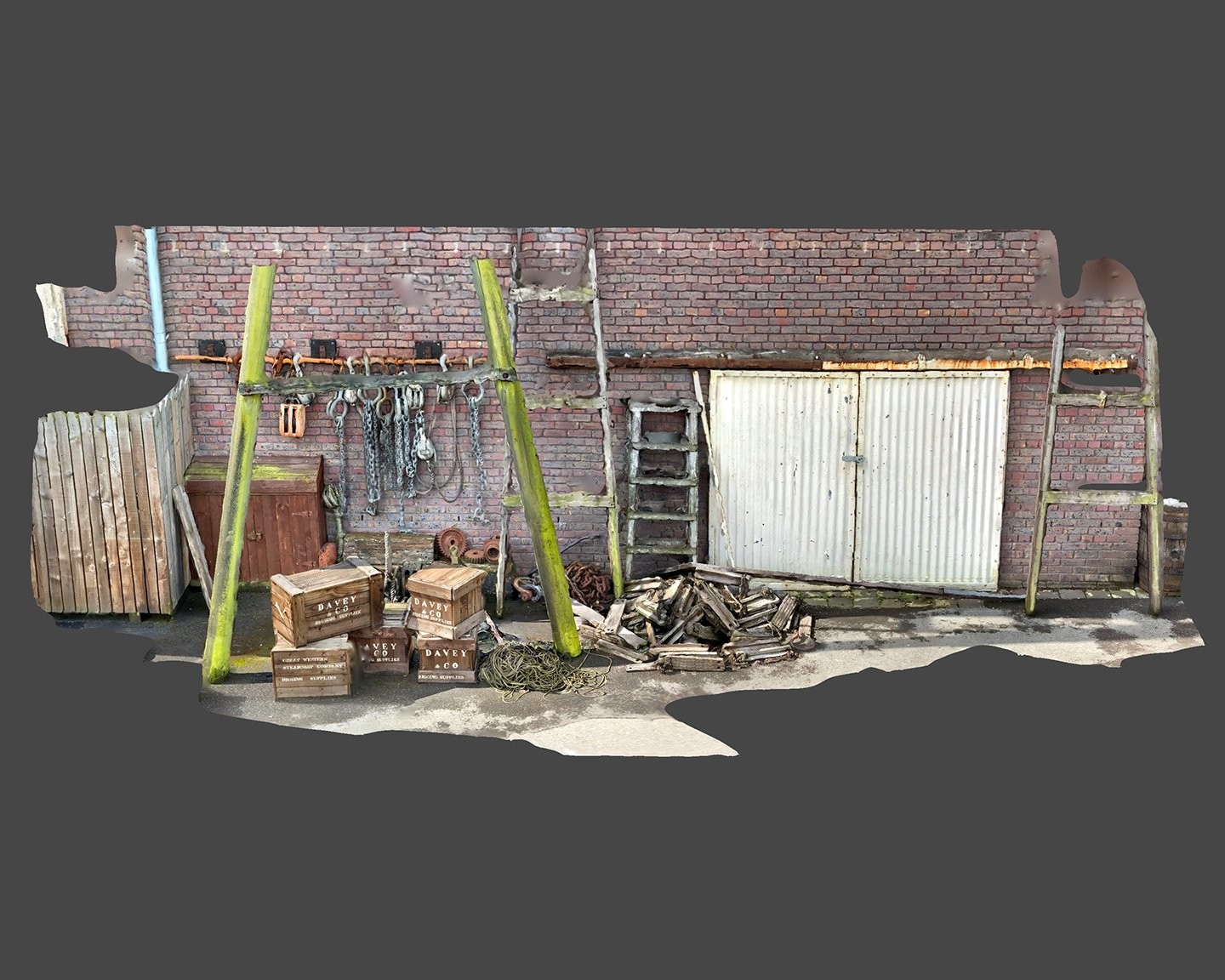


In May we visited the SS Great Britain to LiDAR scan props and set dressings around the Great Western Dockyard. We processed the 3D models and included them as background scenery in our TIDE VR project.
Mid-May saw us travelling to London for the 30th Museum and Heritage Show, where we officially launched our AR binoculars. We showcased some of our favourite augmented and virtual reality projects, ran a workshop about developing historic AR/VR, spoke to hundreds of visitors, and enjoyed hearing how the heritage sector saw our binoculars helping share their site or collection’s history with the public.
And we’ve had more enquiries than ever about our AR/VR binoculars for projects around the world.
One such project is our augmented reality interpretation of the siege of Fort Watson for the American Battlefield Trust. We’re developing an AR binoculars experience and exploratory app to complement the Liberty Trail, and reveal the history of the Santee Wildlife Refuge: from the native American village and ceremonial burial mound, to the Revolutionary War battle for Fort Watson. We’re excited to work with the current Santee chief and council, experienced academics and historians to tell the story of this incredible historic site.
Thanks to our Digital Innovation funding from UWE, we’re able to continue R&D with the binoculars. We’re currently focussed on developing robust and effective ways to run the AR/VR binoculars using solar power, as part of our commitment to sustainable development. We’re also in the early stages of designing handheld, portable AR/VR binoculars, so watch this space!
In early June we hired costumes from Bristol Costume Services and flew to Derry for a green screen stereoscopic shoot at Ulster University Magee campus. Our stereoscopic specialist Misha captured six local actors, who VR users can meet on board the SS Nebraska during the Afloat to Ashore experience. Capturing actors rather than creating 3D characters saves time and results in far more realistic in-game interactions.
We’ve just completed our augmented reality popup book, designed in collaboration with Bristol Old Vic and the University of Bristol Theatre Collection. ‘Making a Scene’ helps students understand backstage theatre careers by putting them in the shoes of a designer. Scanning the book of designs from past productions using the app causes 3D models of set pieces, props, costumed actors, and special effects to pop out of the pages.
Users can then arrange their chosen pieces in any combination and scale their creations from miniature table-top versions to full sized, and even walk around inside the production they’ve designed. Bristol Old Vic have been running workshops utilising the AR experience, and will continue this over the summer.
On top of all that, we’ve made another twelve AR social media filters for clients ranging from musicians and independent artists, to Unite Students, National Rail and Las Iguanas. Click the links to try them out yourself!
So you could say it’s been a busy Q2, with no signs of slowing down! We’re excited to see where we end up in Q3.
